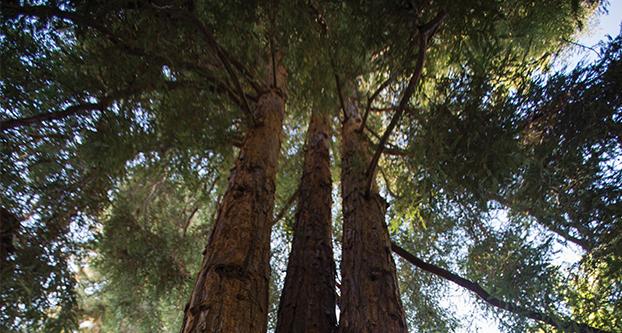As a part of the Fresno State tree care work program, 87 trees throughout campus are confirmed to be either dead, diseased or damaged beyond recovery and have started being removed.
Fresno State’s Arboretum and Campus Planning Committees were consulted in December about the need to remove the unhealthy trees and a certified arborist thoroughly inspected each tree and confirmed its state.
“Once pests gets in and damage the trees, they are susceptible to all these different types of diseases and then you add the drought on top of that, that stresses them even further they declined very rapidly,” said the Grounds Manager Mike Mosinski.
The main trees that have been affected are the Modesto Ash trees, located between Agricultural Sciences building and the Satellite Student Union at north end of the Maple Mall.
The Modesto Ash trees were commonly planted on and around campus in late 1950s, when Fresno State moved to its current location, said Mosinski. After about 10 to 20 years after being planted, the trees started showing signs of having disease and pest issues. The trees found to be susceptible to different types of beetles that would infest the trees and cause damage, he said.
Even throughout the state, he added, in ideal conditions the trees might have a lifespan of 50 to 60 years. At Fresno State, they have typically lasted about 40 years.
“Unfortunately those were planted in pretty large numbers on campus,” Mosinski said. “Then over the last decade as they have become deceased, we have systematically removed them.”
The biggest issue is these diseased trees are a potential hazard to student and campus employees who walk or congregate around them.
“When the arborist did the inspection on the trees and they said we have to much rot and there’s a pretty high danger of these tree branches falling, of the tree just splitting and falling over, so really from a safety aspect we just really had to get those trees removed,” Mosinski said.
The rotting of the trees causes them to become hollow, which generates the potential of the heavy limbs reaching out over the sidewalk and sitting areas which create shade to break off and injure any passers-by.
“We don’t like to take the trees down, but it just comes to a point when we are in danger of causing injury or worse to people then we have to cut them down,” Mosinski said. “A lot of the work has been in progress, and now people are seeing a bigger impact.”
He added that in the last couple years when trees have been removed from campus people have expressed anger. Since then, Mosinski said he has tried to be more proactive about contacting people to inform them about any improvements in the grounds landscaping.
Magda Gilewicz, English professor and director of the writing center, said she monitors the removal of trees because to her it is sad to walk through school and see the voids of the trees that once provided shade. In her 25 years of being a faculty member, she said she has seen the once flourishing areas of campus destroyed and was compelled to share their story on her personal Facebook page.
“I just do it to raise awareness because I think students come and they don’t care, but some of us remember what it looked like when we came here when the trees were big and mature,” Gilewicz said. “When you go to Sacramento State, it’s a campus in the same climate as we and it is gorgeous. There are huge trees growing there. What are we doing wrong that our trees are diseased and we are chopping them down and replacing them all the time?”
Madhusudan V. Katti, an associate professor in the biology department, said he has seen his class progress directly affected by the removal trees in the past, which he uses as habitats to teach a number of his field classes. In his courses, he involves making observations in the field, learning how to measure habitat and understanding the diversity of trees.
“As a biologist and an ecologist, I understand that trees have life cycles, and I also understand that in the urban context the reason why trees need to be removed sometimes,” Katti said.
Katti’s concern as an ecologist is to make sure that there is adequate consultation and the removal is not done merely for convenience but it is done with mindfulness and without disrupting the ecology of campus.
“We are trying to get the word out to people, this is just one of those necessary things we have to do,” Mosinski said. “Our goal is to make it even better. We are trying to get things turned around on campus to where students can enjoy it, and students in the future will have nice shade trees.”
In the areas where the trees will be removed, they will be replaced trees with native oak trees.
“We are looking at native plants and native trees that typically grow in our type of weather,” Mosinski said. “We are still working on which exact species but we are going to pick oak trees that are native to California that would grow well in this environment.”
Other areas like Barstow Avenue, between Maple and Cedar avenues, the Modesto Ash trees were replaced with Chinese pistache trees and toward softball field, the trees have been replaced with Crepe Myrtle trees.
The trees that will be planted are 10-year-old trees, which require a crane to move, but they will begin to provide immediate shade than younger trees would.
“It costs more money, but we get the desired effect of having this grove and those trees would provide some shade, and within a couple of years, you get quite a bit of shade canopy compared to having to wait five more years to get any benefit from the tree,” Mosinski said.
The tree care work plan will continue through February.





